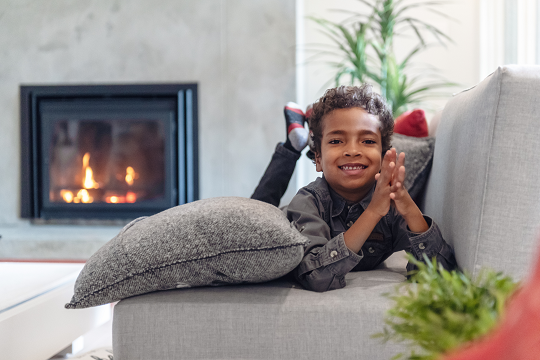Also available in Spanish.
Most nosebleeds look worse than they are. While nosebleeds can messy, a little uncomfortable and sometimes even scary, but they’re usually nothing to worry about.
Kids might get nosebleeds just once in a while or more frequently. Generally, children get nosebleeds that start near the front of the nose, on the wall separating the two sides of the nose (the septum), and usually the nosebleeds start from just one nostril.
Sometimes nosebleeds start further back in the nose, but this is rare and mostly happens in older people or those who have high blood pressure or injuries to their nose or face.

What causes nosebleeds?
Most nosebleeds happen when the little blood vessels that line the inside of the nose break and bleed. These blood vessels are very fragile and lie very close to the surface, which makes them easy targets for injury. Common causes include:
- Nose picking.
- Sticking something up the nose.
- The common cold or an allergy, especially with sneezing, coughing, and nose blowing.
- Dry, heated, indoor air (usually during winter), which causes the inside of the nose to become cracked, crusted and itchy.
Less often, injuries to the outside of the nose, face, or head can cause nosebleeds. If this happens, you should bring your child to see a pediatrician right away. These types of nosebleeds can be prevented by wearing protective gear, such as helmets, for the sports or activities that require them.
Some nosebleeds may be caused by a problem with the blood’s clotting system, but this is rare.
What should I do if my child gets a nosebleed?
If your child’s nose starts bleeding on its own, follow these steps to slow or stop the bleeding:
- Have them sit up or stand.
- Use tissues or a damp washcloth to catch the blood.
- Tip their head forward. Avoid leaning their head back because this can make blood run down the throat.
- Pinch the soft part of their nose (just below the bony part of your nose) together and ask them to breathe through their mouth. Do this for 10 minutes without stopping.
- If the nosebleed doesn’t stop after 10 minutes of pressure, pinch it for another 10 minutes. If it still hasn’t stopped, you may need to bring your child to a primary care clinic.
- Make sure they do not pick, rub or blow their nose because this can make the nose bleed more.
Here are some other cases when you need to visit a pediatrician or the emergency department:
- They feel dizzy, weak or faint like they might pass out.
- Their nose is bleeding fast or they seem to be losing a lot of blood.
- They just started taking a new medication.
- They also have unusual bruising on their body.
- They are bleeding for a long time after an injury.
- They are bleeding from other areas of their body, such as their gums.
Can nosebleeds be prevented?
No one wants to deal with nosebleeds, but can anything be done to prevent them? First off, kids who get frequent nosebleeds should not pick their noses or stick anything up them. They should also practice not blowing their noses as forcefully. Getting your child’s allergies under control can also help reduce nosebleeds.
But it can be difficult to manage nosebleeds when the winter weather makes the inside of your child’s nose dry and itchy. Here are some tips that may help keep your child’s nose moist:
- Use a saline nasal spray, saline nose drops or saline gel two or three times a day.
- Place a small amount of antibiotic ointment on the end of a cotton swab and insert the cotton tip into your child’s nostril and gently apply it to the center wall of their nose. Using a fingertip to apply the ointment also works.
- Place a humidifier in your child’s bedroom. Humidifiers send a fine mist of water into the air and this keeps the air from being too dry. When the air is damp, their nose is less likely to feel dry inside.